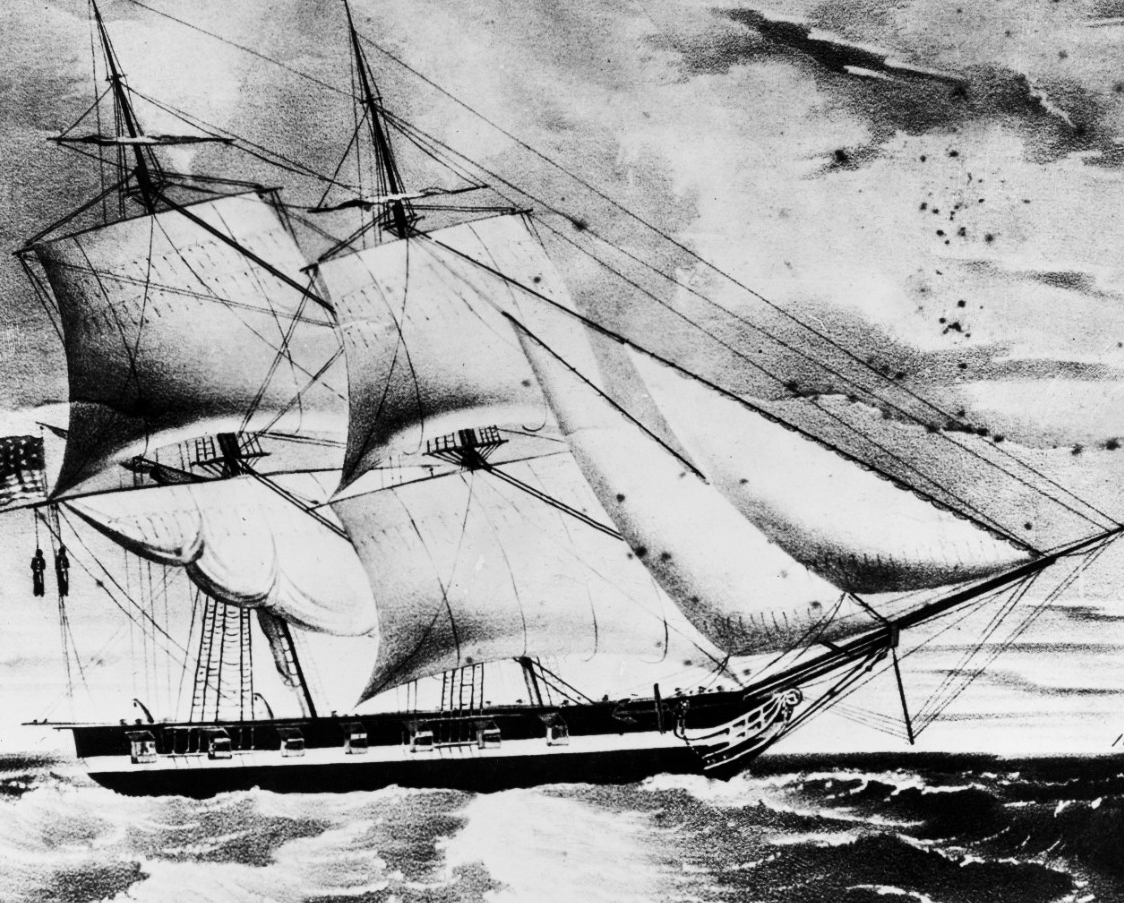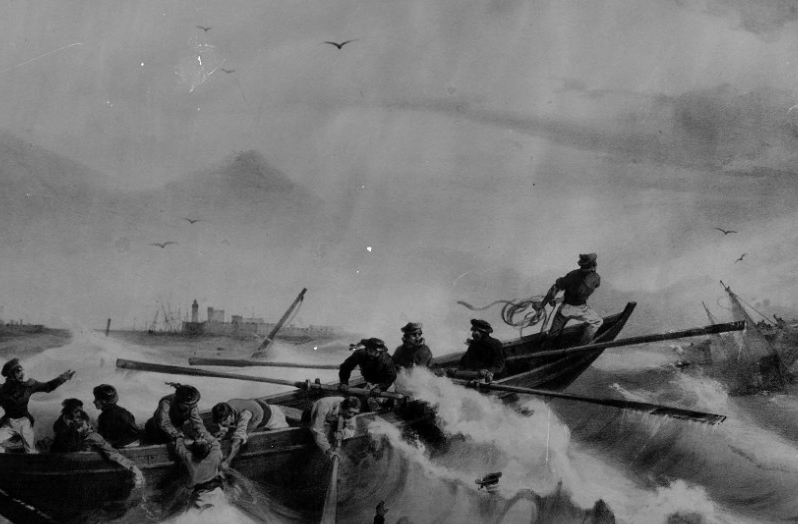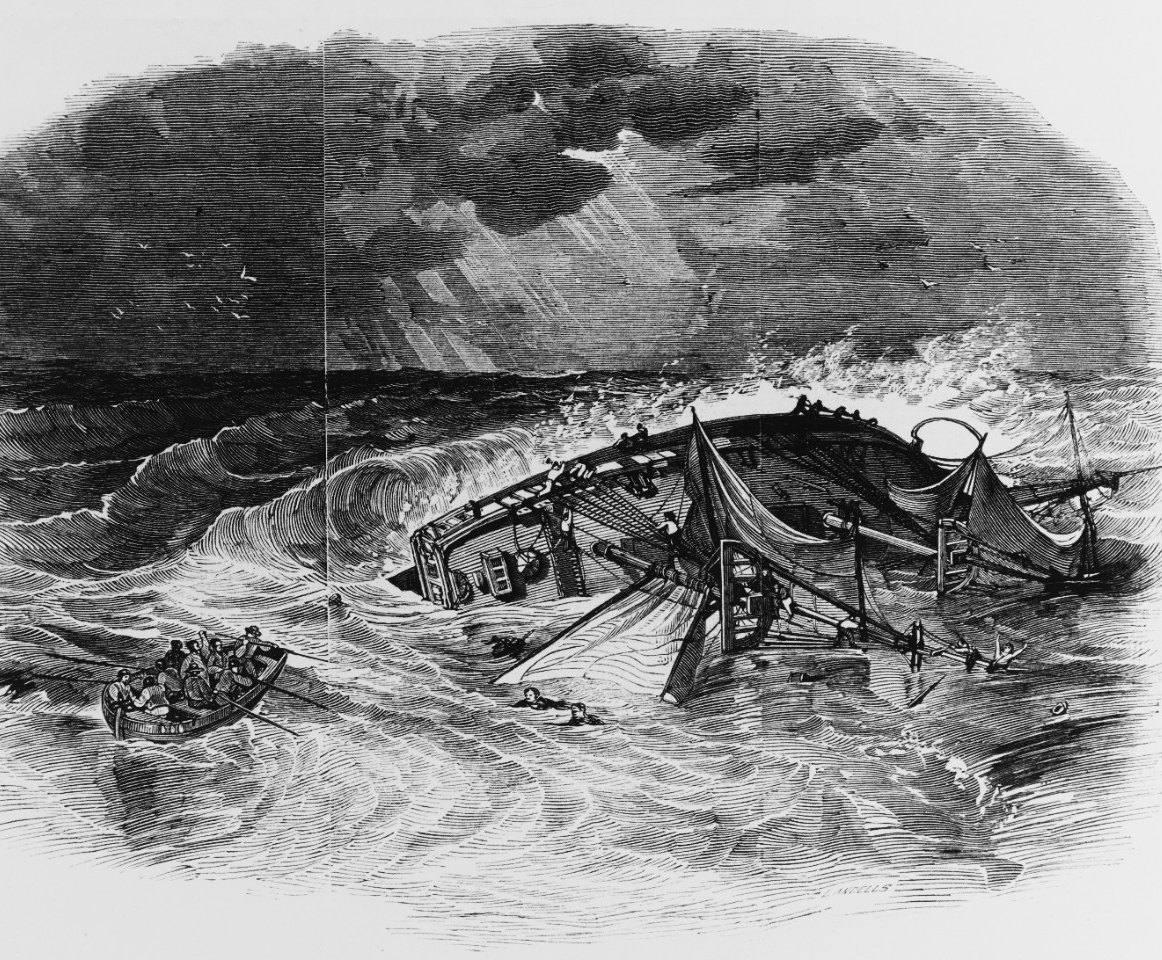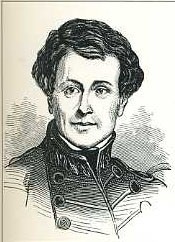U.S. Navy Brig Somers
1842–1846
Brig Somers (1842-1846). Lithograph, published circa 1843, depicting Somers under sail, bound home from the African coast on 1 December 1842, after the hanging of three alleged mutineers. The men executed were: Midshipman Philip Spencer, Boatswain's Mate Samuel Cromwell, and Seaman Elisha Small. The print shows two of them hanging from the yardarm. Courtesy of Rear Admiral Elliot Snow, USN, 1925.
The second Somers was launched by the New York Navy Yard on 16 April 1842, and was commissioned on 12 May 1842, Commander Alexander Slidell Mackenzie in command. The new brig sailed out of New York harbor on 13 September 1842, bound for the Atlantic coast of Africa with dispatches for the frigate Vandalia. On this voyage, Somers was acting as an experimental schoolship for naval apprentices.
By the time Somers reached Liberia, Vandalia had sailed for home. Mackenzie set course for the Virgin Islands in the hope of meeting up with Vandalia on the return to New York. During the voyage, Somers’ officers noticed a steady worsening of morale onboard the ship. On 26 November 1842, Commander Mackenzie arrested Midshipman Philip Spencer, the son of the Secretary of War, for inciting mutiny. The next day, Boatswain’s Mate Samuel Cromwell and Seaman Elisha Small were also arrested.
An onboard investigation indicated the three men were plotting to take over the ship and use Somers for piracy. On 1 December 1842, Somers’ officers reported they had “come to a cool, decided, and unanimous opinion” that the prisoners were “guilty of a full and determined intention to commit a mutiny.” All three were hanged.
Upon Somers’ return to New York, a naval court of inquiry investigated the mutiny and the execution and the subsequent court martial. Both proceedings exonerated Mackenzie. On 20 March 1843, Lt. John West assumed command of Somers, and the brig was assigned to the Home Squadron. For the next few years she served along the Atlantic coast and in the West Indies.
Somers was in the Gulf of Mexico at the opening of the Mexican War in the spring of 1846, commanded by Raphael Semmes. On 26 November, Somers' crew boarded the Mexican schooner Criolla and captured seven prisoners before setting Criolla on fire. Unfortunately, Criolla proved to be an American spy ship operating under Commodore Conner.
On 8 December 1846, while chasing a blockade runner off Vera Cruz, Somers capsized and foundered in a sudden squall. Thirty-two members of her crew drowned and seven were captured.
*****
Ship History and Deck Log
Mutiny
Selected Biographies
Artifact






